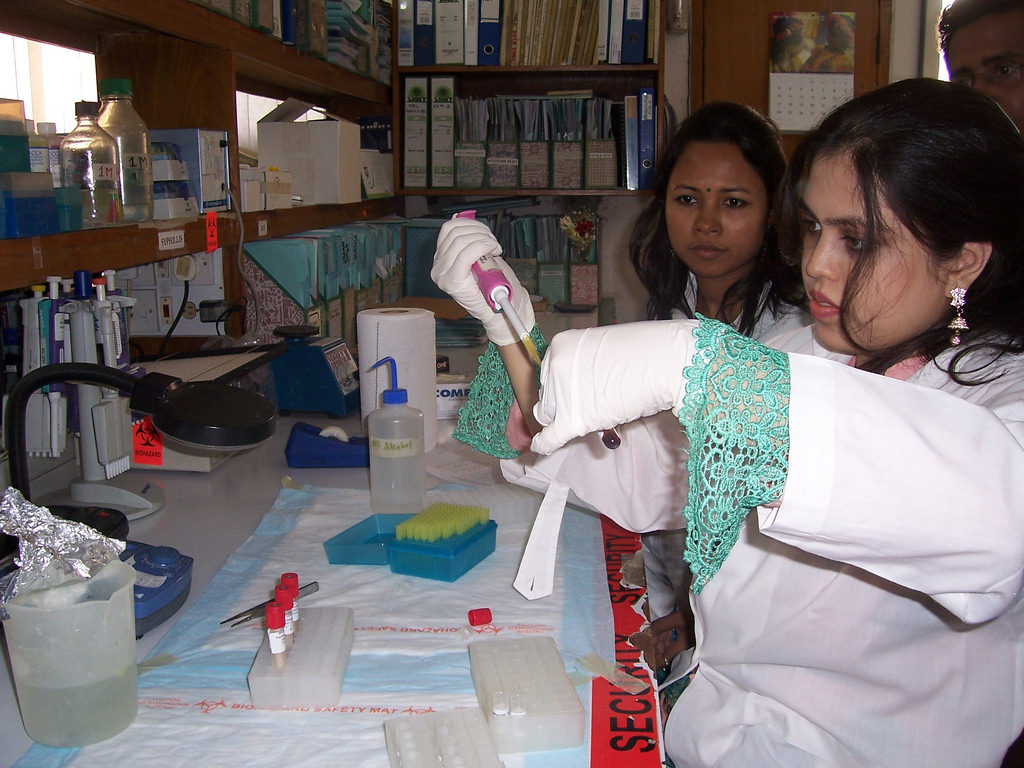“Hepatitis is a deadly global threat”
May 25 Hepatitis attacks the liver, an organ that is essential to good health. Omer Fayshal Pavel, 23, a Commonwealth Correspondent from Dhaka in Bangladesh, looks at some of the causes of hepatitis and ways to prevent or battle the condition.
Hepatitis attacks the liver, an organ that is essential to good health. Omer Fayshal Pavel, 23, a Commonwealth Correspondent from Dhaka in Bangladesh, looks at some of the causes of hepatitis and ways to prevent or battle the condition.
Hepatitis is an inflammatory condition of the liver, usually caused by a viral infection. It can affect a significant number of the mass population. Besides the viral infections, other possible causes of hepatitis include misusing drugs, exposure to toxins, excessive alcohol consumption and even some side effects of medication. It is also true that autoimmune disorders, which make antibodies against your own body tissue, can be a cause of hepatitis.
According to World Health Organization (WHO) it is estimated that globally 325 million people are living with chronic hepatitis B virus (HBV) or hepatitis C virus (HCV) infection. If we have a look at the global hepatitis report of 2017 published by WHO, it indicates that the majority of these people have little access to life-saving tests and treatment. As a result, millions of people are at risk of a slow progression to chronic liver disease, cancer, and death.
In a speech on hepatitis, Dr. Margaret Chan, WHO Director-General, said “Viral hepatitis is now recognised as a major public health challenge that requires an urgent response. Vaccines and medicines to tackle hepatitis exist, and WHO is committed to helping ensure these tools reach all those who need them.”
In 2015, the number of death due to viral hepatitis was 1.34 million while 1.75 million people were recorded with HCV. The death numbers resemble those of TB and HIV, but mortality from tuberculosis and HIV has been declining, whereas deaths from hepatitis are increasing in recent years.
The main causative agent of hepatitis infection is the hepatitis virus. Basically there are five hepatitis viruses acting as the main agent to introduce liver inflammation. These viruses are titled as A, B, C, D and E. Hepatitis A and E are normally transmitted by eating contaminated food or drinking contaminated water. Hepatitis B, C, and D are contracted through contaminated blood. These forms of hepatitis can be either acute or chronic. Types B and C usually become chronic, whereas the others are acute. HCV is the most common blood-borne viral infections in the United States. Though hepatitis D and E are rare forms of hepatitis, HDV found in conjunction with hepatitis B infection and cases of hepatitis E have been reported by CDC in the Middle East, Asia, Central America, and Africa.
Without the viral infections, excessive alcohol can damage liver and is referred to as alcoholic hepatitis. The excess amount of alcohol causes the liver to swell and become inflamed. Another cause is autoimmune disease, where the immune system mistakes the liver act as a harmful object to body and starts to attack it.
Common symptoms of hepatitis include flu-like symptoms, dark urine with pale stool, abdominal pain, loss of appetite or unexplained weight loss or all the symptoms can be together. But if one has chronic hepatitis like hepatitis B and C, then symptoms may not occur until liver damage occurs.
Hepatitis can be diagnosed by a physical exam, liver biopsy, liver function tests, ultrasound, blood tests or viral antibody testing. During a physical examination the symptoms can be enlarged liver, yellow skin or eyes. Liver biopsy is an invasive procedure where a sample of tissue from the liver is taken. An abdominal ultrasound reveals an enlarged liver or liver damage. Blood tests are done to detect the presence of hepatitis virus antibodies and antigen in the blood.
There are some ways to prevent hepatitis, like maintaining personal hygiene and avoid drinking untreated water, or unclean seafood, raw fruit and vegetables, by not sharing needles, razors, or toothbrushes. The most important thing to prevent hepatitis is to get vaccinated.
According to the WHO, globally 84 per cent of children born in 2015 received the three recommended doses of hepatitis B vaccine whereas an estimated 257 million people, mostly adults born before the introduction of the HBV vaccine, were living with chronic hepatitis B infection in 2015. So, as we have the precautions, it is our responsibility to save our future from this deadly disease.
Photo credit: CDC Global Health Disease detectives analyze samples via photopin (license)
…………………………………………………………………………………………………………………
About me: I am a youth from Bangladesh, a country which is densely populated. The overpopulation has created issues that reduce the environmental and health status. As a result, different unexpected health challenges are arriving. My ambition is to overcome these problems by making a network of youths and working as public health professional in the future.
I like to visit different places with different traditions and taste different foods. Right now I am a student of Pharmaceutical science and a health columnist in national news papers.
…………………………………………………………………………………………………………………
Opinions expressed in this article are those of the author and do not necessarily represent the views of the Commonwealth Youth Programme. Articles are published in a spirit of dialogue, respect and understanding. If you disagree, why not submit a response?
To learn more about becoming a Commonwealth Correspondent please visit: http://www.yourcommonwealth.org/submit-articles/
…………………………………………………………………………………………………………………






